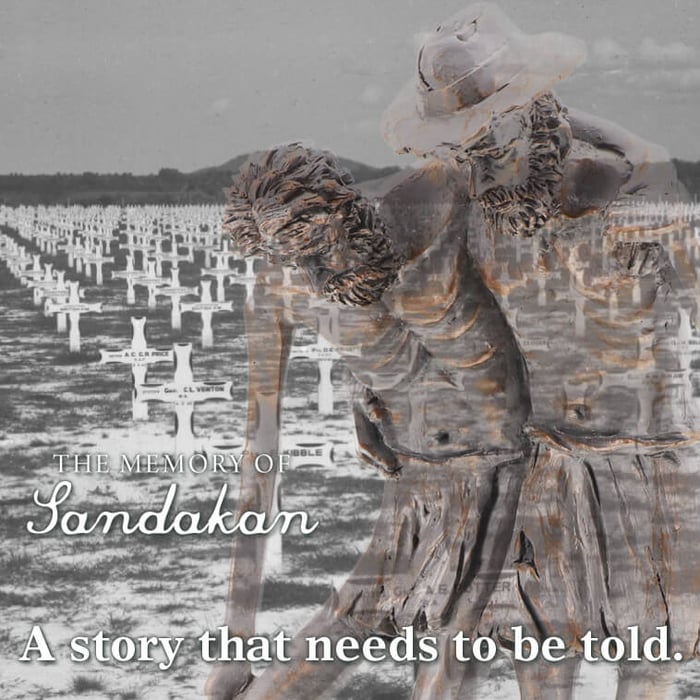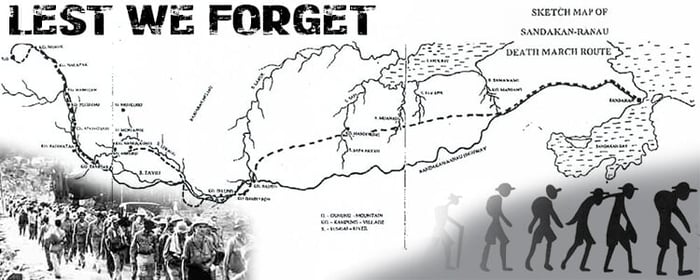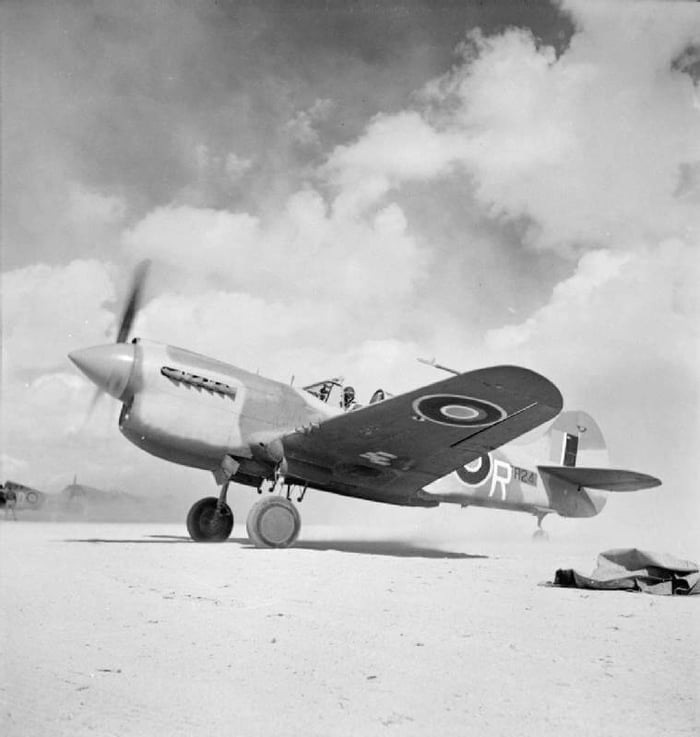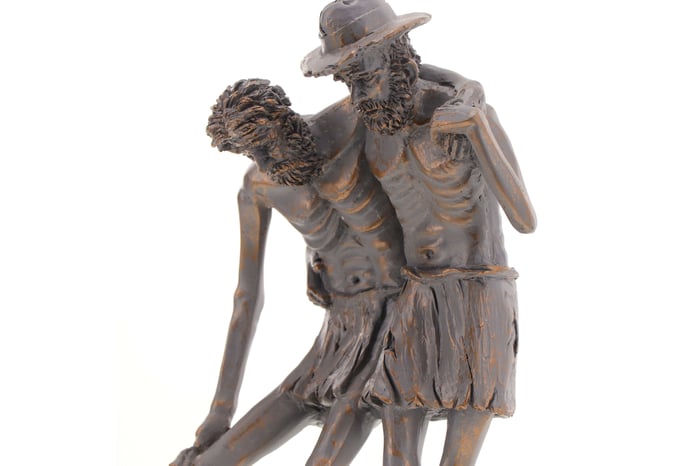
Sandakan Death March, The Story that Needs To Be Told.
15th August this year marks that unprecedented event.

The Sandakan POW camp in Borneo, and the death marches forced upon its prisoners, will live in history as one of the greatest atrocities suffered by Allied POWs in the Asia-Pacific theatre of the Second World War. Of almost 2434 Allied prisoners held by Imperial Japanese forces at Sandakan Camp between 1942-45 only six Australians would survive.
In early 1945, as Allied forces pushed across the Pacific, all Japanese POW camps were ordered to destroy evidence of prisoners. Officers at Sandakan camp, located on the north eastern coast of Borneo, feared a seaborne invasion and began planning the retreat of their troops westward to the coastal town of Tuaran. They selected the Prisoners, emaciated and diseased, to be loaded like pack mules with barely four days provisions and force-marched in three waves between end of January and middle of June. They set out in groups of 50, a total of about 500 in each group, along a manmade track through crocodile infested swamps, raging rivers and into the steep jungle covered mountains to the town of Ranau. For the 1,010 Australian and British POWs in the first and second waves of the marches that were to end in Ranau, 260kms west of the Sandakan Camp. Here the few who survived starvation, exhaustion, beatings and murder on the trail were in turn brutally executed. The third wave of 75 men, so ill and weak that they could only achieve a distance 15kms before their guards gave into a rage and massacred them alongside the road near several villages. The camp itself was burned to the ground and the remaining prisoners, some 300 men too weak to march, were assembled near a mass burial site and murdered. Of the 30 odd that survived in Ranau at the Last Camp, it is believed they were taken out into the jungle about 12 days after the Official Japanese Surrender on 15th Aug.
The last Australian POW in Sandakan was taken to the Airfield and a Japanese Officer withdrew his sword and he was beheaded on the 15th August. The Final Act of Atrocity had been completed.
Only the six Australians who escaped would live to testify at the War Crimes Trials of the atrocities and the evils inflicted on 2434 Allied Prisoners of War.
|
In creating this confronting limited-edition figurine Master Creations worked closely with Ryan Rowland, President of the Borneo Exhibition Group Australia. His unwavering commitment and passion to ensure this sad history is both preserved and shared allowed the Master Creations artisans to honestly capture the reality of those who suffered, and to create a piece that will ensure that the atrocities of the Asia Pacific Theatre of the Second World War will not, and cannot, be forgotten. Limited Edition Guarantee: 1 of only 1,000 cast
To find out more about the events of Sandakan and this Figurines that commemorates it visit
|











